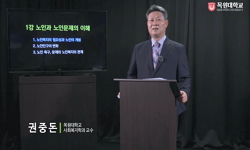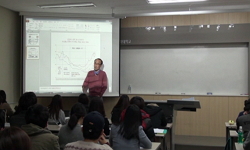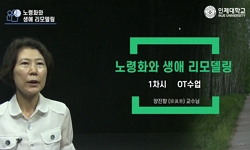Background/Aims: The purpose of the study is to investigate the associations between sarcopenia and health-related quality of life in elderly men and women in Korea. Methods: In a cross-sectional study using data from 2008 to 2011 Korean National Hea...
http://chineseinput.net/에서 pinyin(병음)방식으로 중국어를 변환할 수 있습니다.
변환된 중국어를 복사하여 사용하시면 됩니다.
- 中文 을 입력하시려면 zhongwen을 입력하시고 space를누르시면됩니다.
- 北京 을 입력하시려면 beijing을 입력하시고 space를 누르시면 됩니다.


The impact of sarcopenia on health-related quality of life in elderly people: Korean National Health and Nutrition Examination Survey
한글로보기부가정보
다국어 초록 (Multilingual Abstract)
Background/Aims: The purpose of the study is to investigate the associations between sarcopenia and health-related quality of life in elderly men and women in Korea.
Methods: In a cross-sectional study using data from 2008 to 2011 Korean National Health and Nutrition Examination Survey, 4,937 adults aged 60 years and older who underwent a dual-energy X-ray absorptiometry scan were included in the study. Sarcopenia is defined as an appendicular skeletal muscle index of two standard deviations or more below the mean for young, healthy reference populations. The health-related quality of life was measured using the EuroQol-5 dimension questionnaire.
Results: The overall prevalence of sarcopenia was 6.6% in these Korean people over the age of 60 years: 11.1% for men and 3.2% for women. Sarcopenic men tended to have lower income, lower physical activity, lower body mass index, and smaller waist circumference compared with nonsarcopenic men. Sarcopenic women tended to have higher body mass index and larger waist circumference compared with nonsarcopenic women. Sarcopenic men showed higher impairments in mobility, self-care, usual activities, and pain/discomfort compared with nonsarcopenic men. Women with sarcopenia also showed higher impairments in mobility, self-care, usual activities, and anxiety/depression compared with nonsarcopenic women. Sarcopenia showed an association with impairments in selfcare for men, and with impairments in self-care, usual activities, and anxiety/ depression for women, after adjusting for other confounding factors.
Conclusions: There is a significant association between sarcopenia and impaired health-related quality of life in this elderly Korean population, and these results differ between men and women.
참고문헌 (Reference)
1 What quality of life? The WHOQOL group, "World Health Organization Quality of Life Assessment" 17 : 354-356, 1996
2 Cho Y, "Sarcopenic obesity is associated with lower indicators of psychological health and quality of life in Koreans" 35 : 384-392, 2015
3 Zamboni M, "Sarcopenic obesity : a new category of obesity in the elderly" 18 : 388-395, 2008
4 Fielding RA, "Sarcopenia: an undiagnosed condition in older adults. Current consensus definition: prevalence, etiology, and consequences. International working group on sarcopenia" 12 : 249-256, 2011
5 Kyung Mook Choi, "Sarcopenia and sarcopenic obesity" 대한내과학회 31 (31): 1054-1060, 2016
6 Brown JC, "Sarcopenia and mortality among a population-based sample of community-dwelling older adults" 7 : 290-298, 2016
7 Beaudart C, "Sarcopenia : burden and challenges for public health" 72 : 45-, 2014
8 Cruz-Jentoft AJ, "Sarcopenia : European consensus on definition and diagnosis : report of the European Working Group on sarcopenia in older people" 39 : 412-423, 2010
9 Morley JE, "Prevalence, incidence, and clinical impact of sarcopenia : facts, numbers, and epidemiology-update 2014" 5 : 253-259, 2014
10 Kim YS, "Prevalence of sarcopenia and sarcopenic obesity in the Korean population based on the Fourth Korean National Health and Nutritional Examination Surveys" 67 : 1107-1113, 2012
1 What quality of life? The WHOQOL group, "World Health Organization Quality of Life Assessment" 17 : 354-356, 1996
2 Cho Y, "Sarcopenic obesity is associated with lower indicators of psychological health and quality of life in Koreans" 35 : 384-392, 2015
3 Zamboni M, "Sarcopenic obesity : a new category of obesity in the elderly" 18 : 388-395, 2008
4 Fielding RA, "Sarcopenia: an undiagnosed condition in older adults. Current consensus definition: prevalence, etiology, and consequences. International working group on sarcopenia" 12 : 249-256, 2011
5 Kyung Mook Choi, "Sarcopenia and sarcopenic obesity" 대한내과학회 31 (31): 1054-1060, 2016
6 Brown JC, "Sarcopenia and mortality among a population-based sample of community-dwelling older adults" 7 : 290-298, 2016
7 Beaudart C, "Sarcopenia : burden and challenges for public health" 72 : 45-, 2014
8 Cruz-Jentoft AJ, "Sarcopenia : European consensus on definition and diagnosis : report of the European Working Group on sarcopenia in older people" 39 : 412-423, 2010
9 Morley JE, "Prevalence, incidence, and clinical impact of sarcopenia : facts, numbers, and epidemiology-update 2014" 5 : 253-259, 2014
10 Kim YS, "Prevalence of sarcopenia and sarcopenic obesity in the Korean population based on the Fourth Korean National Health and Nutritional Examination Surveys" 67 : 1107-1113, 2012
11 Kim TN, "Prevalence of sarcopenia and sarcopenic obesity in Korean adults : the Korean sarcopenic obesity study" 33 : 885-892, 2009
12 Adams KF, "Overweight, obesity, and mortality in a large prospective cohort of persons 50 to 71 years old" 355 : 763-778, 2006
13 Osher E, "Obesity in elderly subjects: in sheep’s clothing perhaps, but still a wolf!" (32Suppl 2) : S398-S402, 2009
14 Guralnik JM, "Lower extremity function and subsequent disability : consistency across studies, predictive models, and value of gait speed alone compared with the short physical performance battery" 55 : M221-M231, 2000
15 Korean Centers for Disease Control and Prevention, "Korean National Health and Nutrition Examination Survey" Korean Centers for Disease Control and Prevention
16 Baumgartner RN, "Epidemiology of sarcopenia among the elderly in New Mexico" 147 : 755-763, 1998
17 Rabin R, "EQ-5D : a measure of health status from the EuroQol Group" 33 : 337-343, 2001
18 Kim MH, "Cross-cultural adaptation and validation of the Korean version of the EQ-5D in patients with rheumatic diseases" 14 : 1401-1406, 2005
19 Koo HK, "Conflicting role of sarcopenia and obesity in male patients with chronic obstructive pulmonary disease : Korean National Health and Nutrition Examination Survey" 9 : e110448-, 2014
20 Zamboni M, "Body composition changes in stable-weight elderly subjects : the effect of sex" 15 : 321-327, 2003
동일학술지(권/호) 다른 논문
-
- 대한내과학회
- 유정래
- 2019
- KCI등재,SCIE
-
Transarterial embolization for incorrectable abdominal wall hematoma after abdominal paracentesis
- 대한내과학회
- 문성남
- 2019
- KCI등재,SCIE
-
- 대한내과학회
- 조경민
- 2019
- KCI등재,SCIE
-
Birt-Hogg-Dubé syndrome in Korean: clinicoradiologic features and long term follow-up
- 대한내과학회
- 이주희
- 2019
- KCI등재,SCIE
분석정보
인용정보 인용지수 설명보기
학술지 이력
| 연월일 | 이력구분 | 이력상세 | 등재구분 |
|---|---|---|---|
| 2023 | 평가예정 | 해외DB학술지평가 신청대상 (해외등재 학술지 평가) | |
| 2020-01-01 | 평가 | 등재학술지 유지 (해외등재 학술지 평가) |  |
| 2011-01-01 | 평가 | 등재학술지 유지 (등재유지) |  |
| 2008-01-01 | 평가 | 등재학술지 선정 (등재후보2차) |  |
| 2007-01-01 | 평가 | 등재후보 1차 PASS (등재후보1차) |  |
| 2005-01-01 | 평가 | 등재후보학술지 선정 (신규평가) |  |
학술지 인용정보
| 기준연도 | WOS-KCI 통합IF(2년) | KCIF(2년) | KCIF(3년) |
|---|---|---|---|
| 2016 | 1.37 | 0.26 | 1.02 |
| KCIF(4년) | KCIF(5년) | 중심성지수(3년) | 즉시성지수 |
| 0.83 | 0.73 | 0.566 | 0.13 |





 KCI
KCI KISS
KISS







